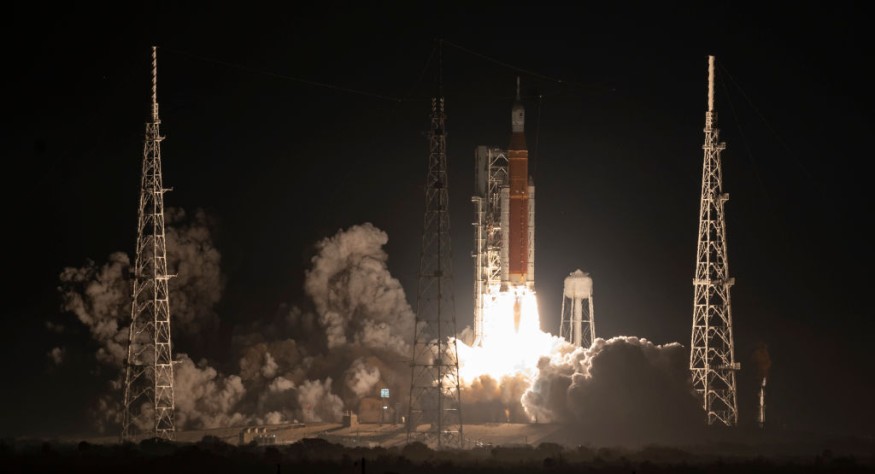NASA Artemis 1's Orion spacecraft mysteriously lost contact with Earth for an unexplained cause on Nov. 23.
Since traveling to the moon on NASA's Artemis 1 mission on Nov. 17, the uncrewed Orion spacecraft has been functioning smoothly. But according to Space.com, there was a hitch.
A communication failure occurred with the Deep Space Network, NASA's radio dish-based communication system, on Wednesday at 1:09 am EST. As a result, Orion lost control of mission controllers.

Glitch Did Not Affect NASA Artemis 1's Orion Spacecraft
The team is investigating the source of the signal loss even though the reconfiguration has been done successfully multiple times in recent days. According to a NASA update, the team reconfigured the ground side to solve the issue.
The command and data handling officer will be downlinking data acquired onboard Orion during the outage to be utilized in that study. Engineers are examining data from the event to try to determine what happened.
According to NASA, Orion did not experience any harm, and its setup is sound. Officials added Orion survived the 47-minute communication interruption in good form.
Orion will perform a crucial procedure on Nov. 25. To put the spacecraft into an orbit around the moon, it will start its engines. If all goes as planned, Orion will spend about a week in that orbit before returning to Earth on Dec. 1.
Gizmodo said the spaceship would face its toughest test if the remainder of Orion's journey is uneventful: a successful reentry through Earth's atmosphere. All of this is, presumably, laying the groundwork for Artemis 2, which will be a replica of Artemis 1 but will carry actual astronauts. The launch of such a mission is anticipated for late 2024. We may keep crossing our fingers for consistent contact with the spacecraft and a prompt resolution to the data loss incident until then.
Will It Break Apollo 13's Record?
This weekend, Orion will surpass Apollo 13's previous record for the furthest spacecraft designed by an astronaut, which stood at around 250,000 miles (400,000 kilometers) from Earth in 1970.
Associated Press said it will have traveled a maximum of around 270,000 miles (433,000 kilometers) from Earth. The capsule will use a parachute to land on Dec. 11 in the Pacific Ocean close to the Californian coast.
The first astronaut mission will take place in 2024 on Artemis 2, piloting a crewed Orion around the moon.
NASA's major goal for the Artemis mission is to create a crewed outpost near the moon's south pole. A year or two later, Artemis 3 will launch and land men there.
Since the project's inception in 2017, it has cost over $40 billion. NASA's main objectives will be to prioritize human space travel and maintain a permanent presence on the lunar surface by constructing a space station and a base camp.
RELATED ARTICLE : NASA's Artemis I Performs Lunar Flyby on the Sixth Day of Its Mission, Passing by Apollo Landing Sites
Check out more news and information on Space in Science Times.












